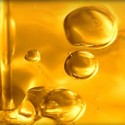Can Additives Be Replenished?

“What happens to the additives in oil over time and is there any way to replenish them?” Over time, additives are depleted performing the function for which they were intended, degraded by hydrolysis, mechanical shearing, condensation settling, water washing, particle scrubbing, etc. The rate of depletion or degradation depends upon the application and the environment. In particular, heat, pressure, shear rate, fuel sulfur, soot, dirt, water, aeration and the presence… more »
The Basics of Synthetic Oil Technology

In the 1930s, Dr. Hermann Zorn of Germany was searching for a lubricant with the properties of natural oils derived from crude oil but without the undesirable properties (high pour points, tendency to gum or gel in combustion engines, low oxidation resistance at higher temperatures, etc.). Germany was also in need of a product that was not derived from crude oil, as the nation’s access to crude oil was becoming… more »
When is It Hot Enough for a Synthetic?

“My supplier is pushing hard to move his synthetic gear oils into my operation. His position is that the units run too hot for long-term use of mineral oils. At what temperature should I switch to a synthetic lubricant for a non-circulated gearbox?” First, the term synthetic is very broad, so we assume you are referring to lubricants that are formulated using polyalphaolefin (PAO) synthetic base oil. There is no… more »
Lubrication Myth

This video explains why relubing once a year is not enough and that relubrication is necessary to replenish grease in bearings when the current grease breaks down or deteriorates. Learn how pumping new grease into a bearing helps to flush away contamination while the old grease is pushed out, as well as how relubrication intervals can vary based on load, speed, temperature or environmental conditions. This article is taken from… more »
